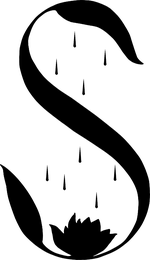‘The Loud Ocean’ and ‘In Time, You Will See How The Sky Is Great Enough’
by Silvia Moldovan & Maria Martelli

“But [pigeons] are more similar to humans than any extraterrestrial species will be, and humans can observe us up close; they can look us in the eye. How do they expect to recognize an alien intelligence if all they can do is eavesdrop from a hundred light-years away?” Ted Chiang
What does the search for extraterrestrial intelligence mean in the current context of global capitalism, simmering in climate crises and hastening the sixth extinction? How can humans who drive dozens of species around them to extinction hope to find others, somewhere else, far away?
Based on conversations conducted virtually over the course of a year, artist Silvia Moldovan and writer-researcher Maria Martelli propose two works that, in dialogue with ”The Great Silence”, trace the invisibility and removal of pigeons from urban spaces, already anthropocentric but increasingly “cleansed” and gentrified.
“The Great Silence” is a collaboration between visual artists Jennifer Allora and Guillermo Calzadilla and science fiction writer Ted Chiang that explores the extinction of a parrot species in the very vicinity of the Arecibo observatory used to transmit signals into the cosmos.
Pigeons have historically been used precisely with the function of an antenna, carrying important messages over great distances and with a speed that no one else could match.
𝑻𝒉𝒆𝒚 𝒉𝒂𝒗𝒆 𝒃𝒆𝒆𝒏 𝒘𝒂𝒓𝒕𝒊𝒎𝒆 𝒎𝒆𝒔𝒔𝒆𝒏𝒈𝒆𝒓𝒔, 𝒄𝒆𝒍𝒆𝒃𝒓𝒂𝒕𝒆𝒅 𝒂𝒔 𝒉𝒆𝒓𝒐𝒆𝒔, 𝒂𝒏𝒅 𝒆𝒙𝒑𝒍𝒐𝒊𝒕𝒆𝒅 𝒊𝒏 𝒑𝒆𝒂𝒄𝒆𝒕𝒊𝒎𝒆 𝒕𝒐 𝒔𝒆𝒏𝒅 𝒇𝒊𝒏𝒂𝒏𝒄𝒊𝒂𝒍 𝒊𝒏𝒇𝒐𝒓𝒎𝒂𝒕𝒊𝒐𝒏 𝒖𝒏𝒕𝒊𝒍 𝒕𝒉𝒆 𝒍𝒂𝒔𝒕 𝒇𝒊𝒇𝒕𝒚 𝒚𝒆𝒂𝒓𝒔. 𝑶𝒏𝒄𝒆 𝒕𝒉𝒆𝒊𝒓 𝒖𝒕𝒊𝒍𝒊𝒕𝒚 𝒕𝒐 𝑾𝒆𝒔𝒕𝒆𝒓𝒏 𝒉𝒖𝒎𝒂𝒏𝒔 𝒇𝒂𝒅𝒆𝒅 𝒘𝒊𝒕𝒉 𝒏𝒆𝒘 𝒕𝒆𝒄𝒉𝒏𝒐𝒍𝒐𝒈𝒊𝒄𝒂𝒍 𝒃𝒓𝒆𝒂𝒌𝒕𝒉𝒓𝒐𝒖𝒈𝒉𝒔, 𝒑𝒊𝒈𝒆𝒐𝒏𝒔 𝒘𝒆𝒓𝒆 𝒇𝒐𝒓𝒈𝒐𝒕𝒕𝒆𝒏 𝒖𝒏𝒕𝒊𝒍 𝒕𝒉𝒆𝒚 𝒘𝒆𝒓𝒆 𝒕𝒖𝒓𝒏𝒆𝒅 𝒊𝒏𝒕𝒐 𝒑𝒆𝒔𝒕𝒔 𝒂𝒏𝒅 𝒄𝒂𝒍𝒍𝒆𝒅 “𝒊𝒏𝒗𝒂𝒔𝒊𝒗𝒆𝒔.”
Much is written in science fiction about invasion, but all too often, the distinction between invader and invaded is clear. Pigeons, however, like other species that get that name, are simply living their lives in coexistence with the humans who domesticated them 10,000 years ago. The species Columba livia is inherently linked to urban spaces but not to specific humans, unlike other domesticated animals.
Can we imagine a future of pigeons, not (just) humans? Because they were, are, and will be, here: synanthropic, with us.
Oceanul Zgomotos / The Loud Ocean
The work consists of a recording of the multiple and diverse voices of a group of pigeons and other birds, residents of the Sepale sanctuary. In response to The Great Silence, The Loud Ocean helps us listen to the voices of a species that is not endangered, not even threatened, yet so invisibilized. Although their numbers are “large,” pigeons suffer as individuals in crowded cities, dying in equally large numbers. Their lives are rarely protected or appreciated, and their minds are disregarded, often associated with a lack of intelligence. Yet pigeons, like any other animal, should not be fitted into the narrow boxes of human understanding. Their minds are different, their visual acuity allows them to navigate complex environments, and their ability to find their ‘nest’ is still partly a mystery to scientists. In searching for extraterrestrial intelligence, humans often forget about other terrestrial intelligence.
Cu Timpul, Vei Vedea Cum Cerul Este Îndeajuns de Mare / In Time, You Will See How The Sky Is Great Enough
[1920×1080, 11:18]
Looking into the eyes of the residents of the Sepale bird sanctuary, we go back in time, telling the story of the pigeons’ convoluted history with humans. Domesticated, abandoned, synanthropic, feral. These birds, descended from dinosaurs, have become fierce survivors of urban environments – complex spaces polluted by traffic and global consumer networks. The planet’s future is divided into several scenarios predicted by climate experts. What do these mean for synanthropes – those who live alongside humans? If the past is scientific (non)fiction written in fossils and rocks, how can we access the future? And should the one who knows it, accesses it, changes it, still be the solitary anthropos? Our history with pigeons shows that we have never been alone. It shows us a possible vision of another anthropos, one who is in solidarity with others.
***
Silvia Moldovan was born on 28 July 1983 in Sânnicolau Mare, Romania. From 2008 to 2013 I studied painting at the Faculty of Arts and Design (West University, Timisoara). My themes are related to nature, animals, human impact on nature and other animals, personal needs, places. I don’t use symbols, I don’t use metaphors. All ambiguous works, from whose image, title or text the message or subject is not clear, have arisen from a personal need for absurdity (as a reaction to the surrounding world or to one’s own seriousness) or from dreams (http://silviamoldovan.art/.) I live and work in a bird shelter near Timisoara. My plan is to make a park-sanctuary for non-raptor birds: https://sepale.ro
Maria Martelli writes and researches mixing queer-feminist and anti-speciesist theories. She has published a children’s book called “The Story of the Sow and the Becoming of Human” and has participated in a few projects as editor-coordinator, a process she particularly enjoys when it is collective. She lives in a post-industrial city with two black cats, two gilded dogs and her human partner. Her debut volume of poetry “the luckiest being” (frACTalia, 2023) is upcoming. They are part of the anti-speciesist art project just wondering…, the Queer Vegan Community and the autonomous literary group Cenaclul X.
